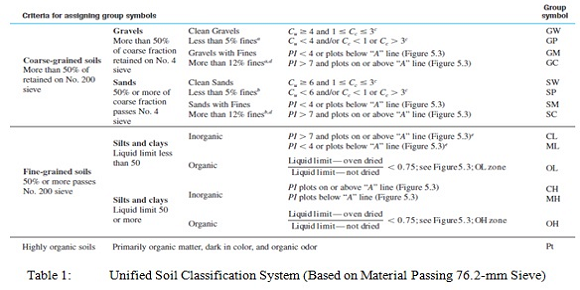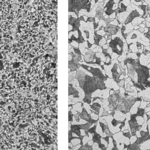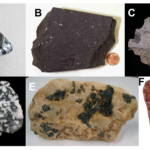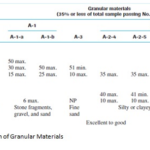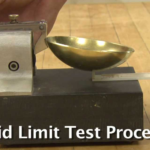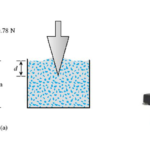Introduction
The Unified Soil Classification System (USCS) is a soil classification system used in engineering and geology to describe the texture and grain size of a soil. The classification system can be applied to most unconsolidated materials, and is represented by a two- or four-letter symbol. The USCS is based on the classification scheme developed by Arthur Casagrande for the United States Army in the 1940’s. Obviously, within a given agency (where designs and plans are reviewed by persons entirely removed from a project) a common basis of soil classification is necessary so that when an engineer classifies a soil as a certain type, this classification will convey the proper characteristics and behavior of the material.
TThe USCS is based on identifying soils according to their textural and plasticity qualities and on their grouping with respect to behavior. Soils seldom exist in nature separately as sand, gravel, or any other single component. They are usually found as mixtures with varying proportions of particles of different sizes; each component part contributes its characteristics to the soil mixture. The USCS is based on those characteristics of the soil that indicate how it will behave as an engineering construction material. The following properties have been found most useful for this purpose and form the basis of soil identification. They can be determined by simple tests and, with experience, can be estimated with some accuracy.
- Percentages of gravel, sand, and fines (fraction passing the No. 200 sieve).
- Shape of the grain-size-distribution curve.
- Plasticity and compressibility characteristics. In the USCS, the soil is given a descriptive name and a letter symbol indicating its principal characteristics.
Definitions
- Fines: soil particles passing the #200 sieve (nominal diameter smaller than 0.075mm)
- Coefficient of uniformity:

- Coefficient of curvature:

Meanings of Letters
| First and/or Second Letter | Second Letter | ||
|---|---|---|---|
| Letter | Definition | Letter | Definition |
| G | Gravel | P | poorly graded (uniform particle sizes) |
| S | Sand | W | well-graded (diversified particle sizes) |
| M | Silt | H | High Plasticity |
| C | Clay | L | Low Plasticity |
| O | Organic |
Coarse-Grained Soils
Soils of the GW, GP, SW, and SP groups are defined as having less than 5 percent passing the No. 200 sieve. Soils which have between 5 and 12 percent passing the No. 200 sieve are classed as borderline.
- Gravel and Gravelly Soils
- GW: Well-graded gravels or gravels and mixtures, little or no fines
- GP: Poorly graded gravels or gravels and mixtures, little or no fines
- GM: Silty gravels, gravel-sand-silt mixtures
- GC: Clayey gravels, gravel-sand-clay mixtures
- Sand and Sandy Soils
- SW: Well-graded sands or gravelly sands, little or no fines
- SP: Poorly graded sands or gravelly sands, little or no fines
- SM: Silty sands, sand-silt mixtures
- SC: Clayey sands, sand-silt mixtures
Fine-Grained Soils
- Silts and Clays (LL < 50)
- ML: Inorganic silts and very fine sands, rock flour, silty or clayey fine sands or clayey silts with slight plasticity
- CL: Inorganic clays of low to medium plasticity, gravelly clays, sandy clays, silty clays, and lean clays.
- OL: Organic silts and organic silt-clays of low plasticity
- Silts and Clays (LL ≥50)
- MH: Inorganic silts, micaceous or diatomaceous fine sandy or silty soils, elastic silts
- CH: Inorganic clays of high plasticity, fat clays
- OH: Organic clays of medium to high plasticity, organic silts
Highly Organic Soils
These highly-organic soils usually are very compressible and have undesirable construction characteristics. They are classified into one group, designated by the symbol Pt. Peat, humus, and swamp soils with a highly-organic texture are typical soils of the group. Particles of leaves, grass, branches, or other fibrous vegetable matter are common components of these soils.
Objective(s) of the Experiment
This procedure is carried out to classify soils according to the Unified Soil Classification System (USCS)
Procedures
For proper classification according to this system, some or all of the following information must be known:
- Percent of gravel—that is, the fraction passing the 76.2-mm sieve and retained on the No. 4 sieve (4.75-mm opening)
- Percent of sand—that is, the fraction passing the No. 4 sieve (4.75-mm opening) and retained on the No. 200 sieve (0.075-mm opening)
- Percent of silt and clay—that is, the fraction finer than the No. 200 sieve (0.075-mm opening)
- Uniformity coefficient (Cu) and the coefficient of gradation (Cc)
- Liquid limit and plasticity index of the portion of soil passing the No. 40 sieve
When these properties had been found, the table and chart below can then be used to determine the proper class of the particular soil sample.
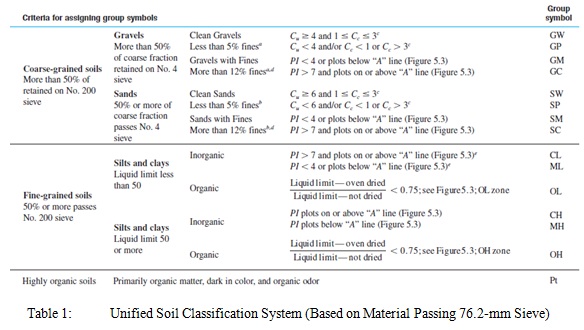
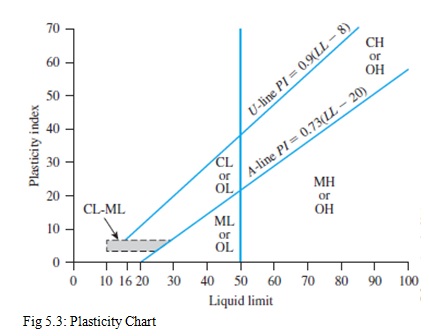
Summary of Table 1 and figure 5.3
- >50% of the specimen is retained on the #4 sieve (nominal diameter larger than 4.75mm) → Gravel (G)
- If <5% fines and Cu ≥ 4 and 1 ≤ Cc ≤ 3→ Well-graded gravel (GW)
- If <5% fines and Cu _ 4 and/or not 1 ≤ Cc ≤ 3 → Poorly-graded gravel (GP)
- If 5% < fines < 12% and the fines are clay → Well-graded gravel with clay (GW-GC) or Poorly-graded gravel with clay (GP-GC) based on Cu and Cc tests above.
- If 5% < fines < 12% and the fines are silt → Well-graded gravel with silt (GW-GM) or Poorly-graded gravel with silt (GP-GM) based on Cu and Cc tests above.
- If >12% fines and fines are clay based on plasticity chart → Clayey gravel (GC)
- If >12% fines and fines are silt based on plasticity chart → Silty gravel (GM)
- If >12% fines and fines are CL-ML based on plasticity chart → Silty clayey gravel (GM-GC)
- >50% of the specimen is retained between the #4 and the #200 sieves (nominal diameter between 0.075 and 4.75mm) → Sand (S)
- If <5% fines and Cu ≥ 6 and 1 ≤ Cc ≤ 3 → Well-graded sand (SW)
- If <5% fines and Cu _ 6 and/or not 1 ≤ Cc ≤ 3 → Poorly-graded sand (SP)
- If 5% < fines < 12% and the fines are clay → Well-graded sand with clay (SW-SC) or Poorly graded sand with clay (SP-SC) based on Cu and Cc tests above.
- If 5% < fines < 12% and the fines are silt → Well-graded sand with silt (SW-SM) or Poorly graded sand with silt (SP-SM) based on Cu and Cc tests above.
- If >12% fines and fines are clay based on plasticity chart → Clayey sand (SC)
- If >12% fines and fines are silt based on plasticity chart → Silty sand (SM)
- If >12% fines and fines are CL-ML based on plasticity chart → Silty clayey sand (SM-SC)
Discussion and Conclusion
In some cases, it may be necessary to expand the USCS by subdividing existing groups to classify soils for a particular use. The indiscriminate use of subdivisions is discouraged and careful study should be given to any soil group before adopting such a step. In all cases, subdivisions should be designated preferably by a suffix to an existing group symbol. The suffix should be selected carefully so there will be no confusion with existing letters that already have meanings in the classification system. In each case where an existing group is subdivided, the basis and criteria for the subdivision should be explained so that anyone unfamiliar with it may understand the subdivision properly.
References
- Mamlouk, M.S. And Zaniewski J.P. (2011). “Materials For Civil and Construction Engineers”
- Das, B.M.and Sobhan, K. (2014). “Principles of Geotechnical Engineering Eighth Edition, SI”
- “Unified Soil Classification System” FM 5-472/NAVFAC MO 330/AFJMAN 32-1221(I)
- Wikipedia. “Unified Soil Classification System”. http://en.wikipedia.org/wiki/Unified_Soil_Classification_System. February 28, 2018.
